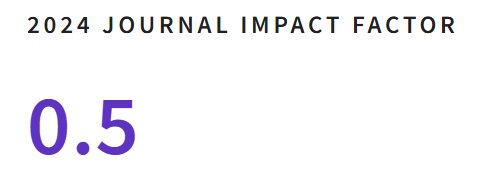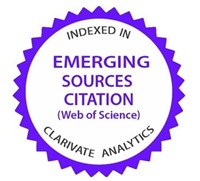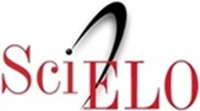#RibeiraSacra: The DPB in a Wine Tourism Destination through Instagram
DOI:
https://doi.org/10.35588/363xpm90Keywords:
tourism, branding, internet, social media, digital platformAbstract
Instagram and wine tourism come together in this study to analyse the management of the Destination Place Brand (DPB) in a destination and if it is planned and managed in a coordinated manner between all the local actors present in the wine regions. At the same time, we appreciate how social networks can become a driving force in the national and international projection of these territories. Specifically, this research focuses on one of the emerging wine tourism Spanish destinations that was even presented as a candidate for World Heritage Site due to the uniqueness of its landscapes destined for the called heroic viticulture, #RibeiraSacra. In order to achieve this objective, a quantitative methodology has been initially carried out that has allowed us to glimpse the first approximations in terms of the management of publications, keywords or interaction with the user, whose first results confirm the existence of a gap between the brand identity and the brand image generated by wine tourism activity in the region from the perspective of the two main actors involved.
Downloads
References
Balakrishnan, M. (2009). Strategic Branding of Destinations: A Framework. European Journal of Marketing, 43(5/6), 611-629. DOI https://doi.org/10.1108/03090560910946954
Chiappa, G., Alebaki, M. y Menexes, G. (2019). Winery Operators’ Perceptions of Factors Affecting Wine Tourism Development in Italy. En M. Kozak y N. Kozak (Eds.), Tourist Destinations: Instrument, Products and Cases (pp. 177-191). Springer. DOI https://doi.org/10.1007/978-3-030-16981-7_10
Cristófol, F.J., Aramendia, G.Z. y De-San-Eugenio-Vela, J. (2020). Effects of Social Media on Enotourism. Two cases study: Okanagan Valley (Canada) and Somontano (Spain). Sustainability (Switzerland), 12(17), 6705. DOI https://doi.org/10.3390/SU12176705
Cruz-Ruiz, E., Cristòfol, F.J. y Zamarreño-Aramendia, G. (2023). Managing Digital Presence in Wineries Practicing Heroic Agriculture: The Cases of Ribeira Sacra and Lanzarote (Spain). Agronomy, 13(3), 946. DOI https://doi.org/10.3390/agronomy13030946
De Jesús-Contreras, D., Thomé-Ortiz, H. y Medina, F.X. (2020). Enoturismo y promoción del territorio: Análisis comparativo entre el nuevo y el viejo mundo del vino. PASOS Revista de Turismo y Patrimonio Cultural, 18(3), 457-471. DOI https://doi.org/10.25145/j.pasos.2020.18.032
Fernández Portela, J. y Pardo Abad, C. (2020). Las plataformas digitales en el desarrollo del enoturismo en Castilla y León: Páginas web y redes sociales. Cuadernos de Turismo, 46, 47-69. DOI https://doi.org/10.6018/turismo.451491
Gómez-Rico, M., Molina-Collado, A., María, Santos-Vijande, L., Molina-Collado, V. e Imhoff, B. (2023). The Role of Novel Instruments of Brand Communication and Brand Image in Building Consumers’ Brand Preference and Intention to Visit Wineries. Current Psychology, 42, 12711-12727. DOI https://doi.org/10.1007/s12144-021-02656-w
Greaves, N. y Skinner, H. (2010). The Importance of Destination Image Analysis to UK Rural Tourism. Emerald, Marketing Intelligence and Planning, 28(4), 486-507. DOI https://doi.org/10.1108/02634501011053586
Gupta, V., Jung, K. y Yoo, S.C. (2020). Exploring the Power of Multimodal Features for Predicting the Popularity of Social Media Image in a Tourist Destination. Multimodal Technologies and Interaction, 4(3), 64. DOI https://doi.org/10.3390/mti4030064
IAB Spain (2023). Estudio de Redes Sociales 2023. IAB Spain y Elogia. https://iabspain.es/sin-acceso/download-id/240924/
Lopes, C. y Rengifo-Gallego, J.I. (2023). El enoturismo en internet: Evaluación de los sitios web de las bodegas de tres rutas del vino de Extremadura (España) y de Alentejo y Região Centro (Portugal). Investigaciones Turísticas, 26, 207-234. DOI https://doi.org/10.14198/INTURI.21870
McDonald, E. (2020). Data, Analytics and Creative Intuition: An Analysis of How to Optimise return on social media investment on Instagram. Journal of Digital and Social Media Marketing, 8(1), 21-32. DOI https://doi.org/10.69554/XGJC1073
Medina, F.X. (2017). Reflexiones sobre el patrimonio y la alimentación desde las perspectivas cultural y turística. Anales de Antropología, 51(2), 106-113. DOI https://doi.org/10.1016/j.antro.2017.02.001
Peixeiro, F.A., Fontes, R.A. y Domingues, V.J. (20 a 23 de junio de 2023). Marketing digital no enoturismo: O caso da Quinta do Sobreiró de Cima. En 18th Iberian Conference on Information Systems and Technologies (CISTI). Universidad Aveiro, Aveiro, Portugal.
Perpiña, L., Camprubí, R. y Prats, L. (2019). Destination Image Versus Risk Perception. Journal of Hospitality and Tourism Research, 43(1), 3-19. DOI https://doi.org/10.1177/1096348017704497
Pop, R.A., Săplăcan, Z., Dabija, D.C. y Alt, M.A. (2022). The Impact of Social Media Influencers on Travel Decisions: The Role of Trust in Consumer Decision Journey. Current Issues in Tourism, 25(5), 823-843. DOI https://doi.org/10.1080/13683500.2021.1895729
Scorrano, P., Fait, M., Maizza, A. y Vrontis, D. (2019). Online Branding Strategy for Wine Tourism Competitiveness. International Journal of Business Research, 31, 130-150. DOI https://doi.org/10.1108/IJWBR-06-2017-0043
Thrassou, A. y Ciasullo, M.V. (2015). A Value Co-Creation Model for Wine Tourism. International Journal of Management Practice, 8(3), 247-267. DOI https://doi.org/10.1504/ijmp.2015.072767
Volo, S. e Irimiás, A. (2021). Instagram: Visual Methods in Tourism Research. Annals of Tourism Research, 91, 103098. DOI https://doi.org/10.1016/j.annals.2020.103098
Zeler, I., Oliveira, A. y Malaver, S. (2019). La gestión comunicativa de las empresas vitivinícolas de España en las principales redes sociales. Revista Internacional de Relaciones Públicas, 18(9), 161-178. DOI https://doi.org/10.5783/RIRP-18-2019-09-161-178
Downloads
Submitted
2024-10-24Published
Issue
Section
License
Copyright (c) 2025 RIVAR

This work is licensed under a Creative Commons Attribution 4.0 International License.









